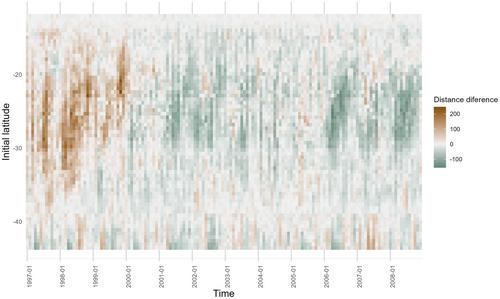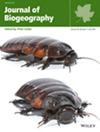The biophysical dynamics of giant kelp, Macrocystis pyrifera: Seasonal patterns and dispersal mechanisms in the southeast Pacific
Abstract
Aim
Dispersal and connectivity play important roles in shaping the population structure of giant kelp, Macrocystis pyrifera, across the western coast of South America. Its high potential dispersal capacity suggests the existence of metapopulations, where discrete habitat patches or groups of patches form subpopulations that interact at some level. However, the dispersal patterns of giant kelp in this region have not been quantified. This study assesses the dispersal and settlement of Macrocystis pyrifera in the southeast Pacific, specifically focusing on the impact of environmental variables and ocean currents within the Humboldt Current System.
Location
Southeast Pacific (coast of Chile and Peru).
Time Period
1997–2008.
Major Taxa Studied
Macrocystis pyrifera (giant kelp).
Methods
Using a combination of hydrodynamic and individual-based models, we analysed kelp fragment movements over 12 years, with a particular emphasis on the effects of the El Niño-Southern Oscillation (ENSO) and seasonal changes.
Results
Our results highlight a key settlement area in the southern Chilean region. We found that shorter travel distances of kelp fragments increased the likelihood of reaching a suitable habitat, underscoring the importance of local environmental conditions. We delineated intricate northward dispersal paths for kelp fragments, which appear to be governed by the interplay of wind and ocean current dynamics. Seasonal variations, notably in autumn and winter, favour the likelihood of reaching a settlement area due to favourable winds. Furthermore, ENSO events appear to influence dispersal distances, with fragments travelling the longest distances during El Niño phases.
Main Conclusion
These findings are essential for informing kelp conservation strategies in the context of climate change, emphasizing the necessity of considering local and seasonal environmental factors alongside ENSO impacts.


 求助内容:
求助内容: 应助结果提醒方式:
应助结果提醒方式:


